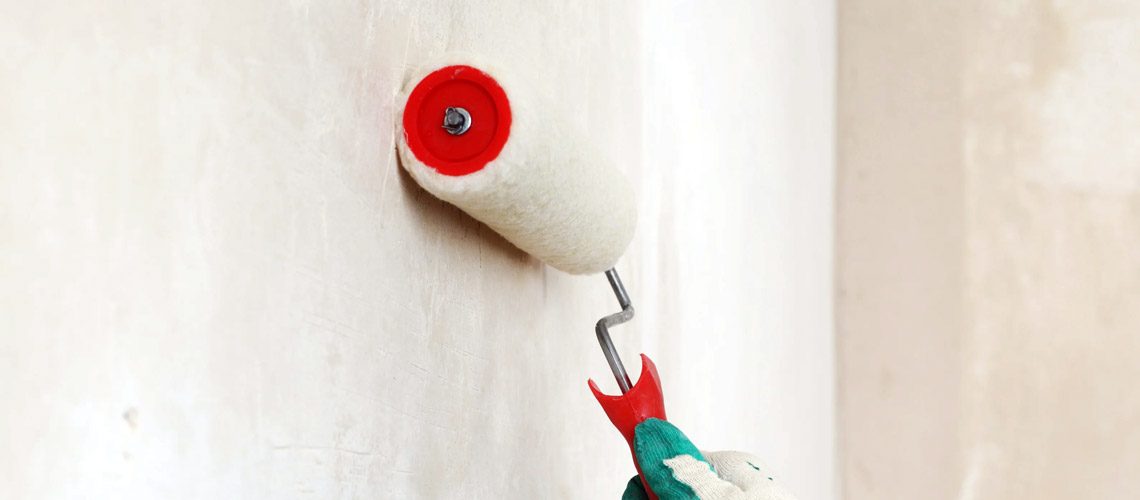When considering repainting walls that have already been painted, it’s essential to ask: Do you need to undercoat these walls? The answer isn’t a simple yes or no. It depends on several key factors. These include the existing paint’s condition, the type of new paint you plan to use, and the final look you want to achieve in your home. Each of these elements is crucial in determining whether an undercoat is necessary. Let’s investigate these aspects to understand their impact on your painting project.
When to Use an Undercoat
An undercoat serves as a preparatory coating, essential in various painting scenarios. It ensures a smooth, durable, and visually appealing finish. Understanding when to apply an undercoat can transform the outcome of your painting project. Here are specific scenarios where an undercoat is indispensable:
- Painting Over a Dark Color with a Lighter One: When transitioning from a dark to a light colour, an undercoat is crucial. It neutralises the darker shade, preventing it from bleeding through and affecting the new, lighter colour.
- Covering Stains or Blemishes: Walls with stains, marks, or blemishes benefit significantly from an undercoat. It is a barrier, preventing these imperfections from seeping through the final paint layer.
- Sealing Porous Surfaces: Porous surfaces like new plaster or drywall absorb paint unevenly. An undercoat seals these surfaces, ensuring even absorption and a uniform appearance.
- Improving Paint Adhesion: On glossy or non-porous surfaces, an undercoat enhances the adhesion of the topcoat. This is particularly crucial in kitchens, bathrooms, or on surfaces previously painted with gloss or semi-gloss paints.
The benefits of using an undercoat are significant:
- Better Coverage: An undercoat provides a consistent base, enhancing the opacity of the topcoat. This means you may need fewer coats of your chosen colour, ultimately saving time and paint.
- Smoother Finish: It smooths out irregularities on the surface, leading to a more even and professional-looking finish.
- Enhanced Durability: An undercoat adds an extra layer of protection, making the paintwork more resilient to wear and tear. This is especially important in high-traffic areas or rooms exposed to moisture.
When You Can Skip the Undercoat
While an undercoat is crucial in certain scenarios, there are situations where skipping it can be both practical and advantageous. Recognizing these instances can save time and resources without compromising the quality of your paint job. Here are key situations where an undercoat may not be necessary:
- Painting Over a Similar Color in Good Condition: If you’re repainting with a colour similar to the existing one and the current paint is in good condition, an undercoat may be redundant. This is particularly true if the existing paint is free from stains, cracks, or peeling.
- Using High-Quality Paint with Built-in Primer: Many high-quality paints now come with a built-in primer. These products are formulated to offer good coverage and adhesion, reducing the need for a separate undercoat, especially when painting over a surface with minimal imperfections.
However, it’s essential to be aware of the potential downsides of skipping an undercoat when it might be beneficial:
- Extra Time and Expense in the Long Run: While skipping an undercoat saves time and money initially, it may lead to more frequent touch-ups or repaints in the future, especially in high-traffic areas or on surfaces exposed to harsh conditions.
- Potential for a Thicker Paint Layer: Applying multiple coats of paint to achieve the desired coverage or colour depth without an undercoat can result in a thicker paint layer. This can lead to longer drying times, a greater likelihood of peeling, and a less natural finish.
How to Choose the Right Undercoat
Selecting the right undercoat is a pivotal decision in your painting project. The appropriate undercoat depends on the paint type you’re using and the specific needs of your project. Here’s a guide to help you make an informed choice:
1. Based on Paint Type:
- For Oil-Based Topcoats: Choose an oil-based undercoat. It offers great adhesion and is ideal for surfaces that will be exposed to wear and tear. Oil-based undercoats are particularly suitable for woodwork and metal surfaces.
- For Water-Based Topcoats: Opt for a water-based undercoat. These undercoats dry faster and have lower levels of volatile organic compounds (VOCs), making them more environmentally friendly and easier to clean up.
2. Based on Project Needs:
- For Stain Blocking: If you’re dealing with stains or significant colour changes, select a stain-blocking undercoat. These are specifically formulated to prevent stains and dark colours from bleeding through.
- For High-Traffic Areas: In areas that endure a lot of wear and tear, like hallways and kitchens, choose a durable undercoat that can withstand frequent cleaning and contact.
Recommendations for Different Undercoat Products:
- Zinsser Bulls Eye 1-2-3: A water-based primer-sealer, excellent for most interior and exterior surfaces. It’s known for its stain-blocking ability and good adhesion, especially on glossy surfaces. If you are looking for a good sandable primer, check out Zinsser Primecoat2.
- Dulux 1 Step Acrylic Primer Sealer Undercoat: An all-in-one product suitable for a wide range of surfaces. It’s water-based, making it easy to apply and quick to dry, ideal for interior walls.
- Johnstone’s Professional Undercoat: A high-quality oil-based undercoat, perfect for achieving a smooth finish on wood and metal surfaces. It’s durable and provides a solid base for gloss or satin topcoats.
- Sherwin-Williams PrepRite ProBlock Interior/Exterior Latex Primer/Sealer: This product is a great option for blocking and sealing out stains. It’s versatile for both interior and exterior use and works well under latex or oil-based paints.
When choosing an undercoat, consider the surface you are painting, the type of topcoat you’ll be using, and your project’s specific conditions. Different products offer unique features and benefits, so selecting the right one can enhance the durability, appearance, and effectiveness of your paint job. Remember, a well-chosen undercoat can make a significant difference in the outcome of your painting project.
How to Apply an Undercoat
Applying an undercoat effectively is key to achieving a professional and lasting finish for your interior painting project. Here’s a step-by-step guide, complete with tips for a smooth and even application:
Step 1: Prepare the Surface
- Clean the Walls: Remove dirt, dust, and grease spots with mild detergent and water. Rinse thoroughly and allow the surface to dry.
- Repair Imperfections: Fill any holes or cracks with suitable filler. Once dry, sand the surface smooth.
- Sand Glossy Surfaces: Lightly sand glossy or non-porous surfaces to improve adhesion.
- Dust Off: Wipe the walls with a clean, damp cloth to remove sanding dust.
Step 2: Prime and Protect
- Tape Off Areas: Use painter’s tape to protect trim, ceilings, and any areas you don’t want painted.
- Cover Floors and Furniture: Lay drop cloths to protect floors and any furniture in the room.
Step 3: Apply the Undercoat
- Stir the Undercoat: Stir the undercoat thoroughly to ensure consistent colour and texture.
- Use the Right Tools: Use a high-quality brush or roller. Brushes are great for edges and small areas, while rollers are ideal for larger wall spaces.
- Apply Evenly: Start from the top of the wall and work your way down. Apply the undercoat in smooth, even strokes, overlapping each pass slightly to avoid streaks.
- Roller Technique: For rolling, use a W or M pattern to spread the undercoat evenly across the wall. Fill in the pattern without lifting the roller to avoid marks.
Step 4: Let It Dry and Assess
- Drying Time: Allow the undercoat to dry completely. Check the product’s instructions for the recommended drying time.
- Inspect the Surface: Once dry, inspect for any missed spots or uneven areas. Lightly sand if necessary for a smoother finish.
Step 5: Apply a Second Coat (If Needed)
- Second Coat: In some cases, a second coat of undercoat may be necessary for better coverage, especially when painting over dark or stained surfaces.
Tips for a Smooth, Even Finish:
- Don’t Overload the Brush or Roller: Avoid excess paint to prevent drips.
- Maintain a Wet Edge: Work in sections and keep a wet edge to avoid visible seams.
- Use Good Quality Brushes and Rollers: Invest in good tools for a smoother application.
- Avoid Rushing: Take your time to ensure even coverage and avoid rushing, which can lead to a subpar finish.
By following these steps and tips, you can apply an undercoat effectively, laying the foundation for a beautiful and durable paint job.

